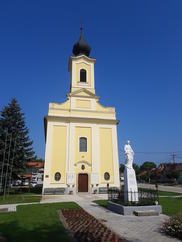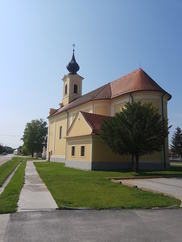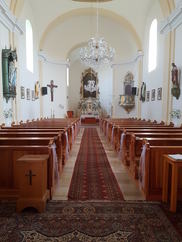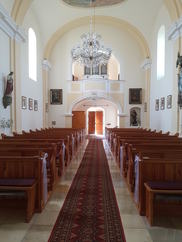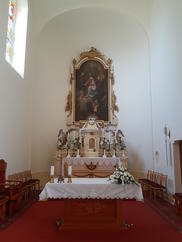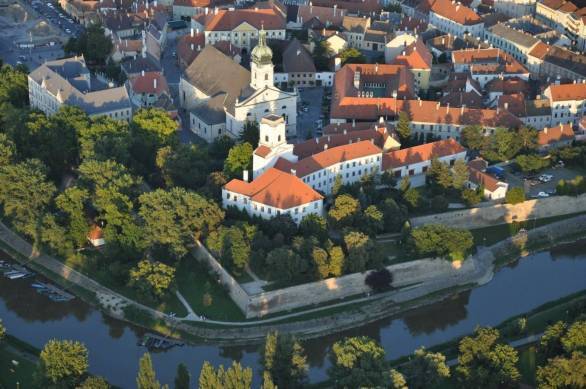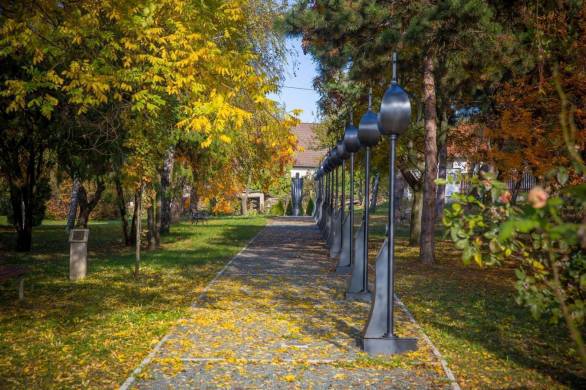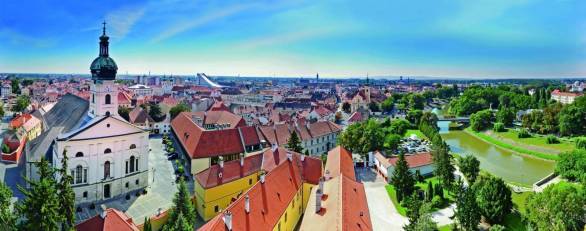St Clement’s Church
The church was built by Count Mihály Vitzay in 1777. The altar depicts the glorification of Peter the Apostle’s third successor, Pope Clement, who was martyred in 101. The painting is the work of Franz Anton Maulbertsch or one of his acolytes. The painting shows Clement rising in the clouds towards the Lamb representing Christ. He is surrounded by angels, papal insignia and the participants of a procession. These people are standing next to a church surrounded by water and turning their gaze to the saint, seeking help from an intercessor. The inhabitants of Lipót, who were often endangered by the floodwaters of the Danube, were also under the protection of Saint Clement, whose life and martyrdom were both related to water. Convention has it that Pope Clement was exiled by the Emperor Trajan to the Crimea, where he worked as a slave in a marble mine. He and his companions in this forced labour often suffered from great thirst. In response to their common prayer, Clement – instead of Jesus who had appeared in his vision - brought forth a great source of water, in which the aghast inhabitants of the area were baptised. When this came to the emperor’s knowledge, he ordered that stones be tied around Clement’s neck and that he be cast into the sea. The saint’s body did not remain in its watery grave however, as the sea retreated so that the faithful could bring his dead body back to dry ground.
